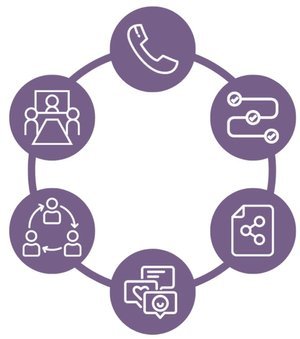In the Modern Work environment, as is often the case, the devil is in the details. Moving to the cloud is a good start. But to realize the many benefits in the hybrid, the tools must also be configured and used correctly.
Public cloud platforms such as Microsoft 365 play a central role in the digital transformation of companies: the workforce demands apps such as Microsoft Teams and Microsoft 365 for working in the hybrid, and CIOs are tasked with realizing cost-saving potential by replacing expensive on-premises solutions.
But what happens after that?
Once Microsoft Teams has been installed on employees' PCs and mobiles?
The first impression: simple and flexible
The superficially simple usability is followed by various chaos scenarios, because IT, users, management are often unaware of the challenges of the many hidden settings of Microsoft Teams.
Microsoft Teams is a very versatile application. In addition to telephony, conferencing and chats for communication, there are Teams and Channels for collaboration. More and more additional functions are being integrated. The goal is to integrate formerly separate applications into one interface that works for all devices and delivers on the promise of simplicity and flexibility to users.
At length, it can get messy
Yes, the apps are easy to use. But it's the ease of use that is the bane of many companies - namely, where users work uncontrollably with the various Microsoft applications.
Untangling Babylonian Confusion
The multi-layered nature of Microsoft 365 often means that no one can see or keep track of the big picture in order to manage the necessary digital transformation.
At MondayCoffee we focus on a holistic and integrated approach consisting of software, business consulting, engineering and adoption. This way we address different target groups in the organization and meet their needs and goals.
For business departments and individual employees, we improve the user experience and provide them with additional functions for more productivity in work and collaboration.
For IT, we enable efficient management of an orderly and secure Modern Work environment through automation and standards.
We accompany the management on their way to modern and secure work.
Want to know more? We look forward to an exchange with you.












































